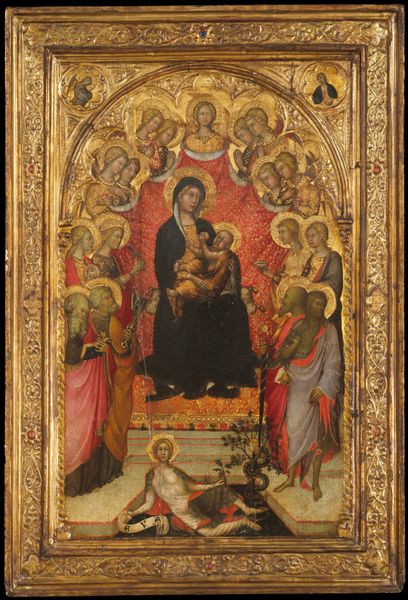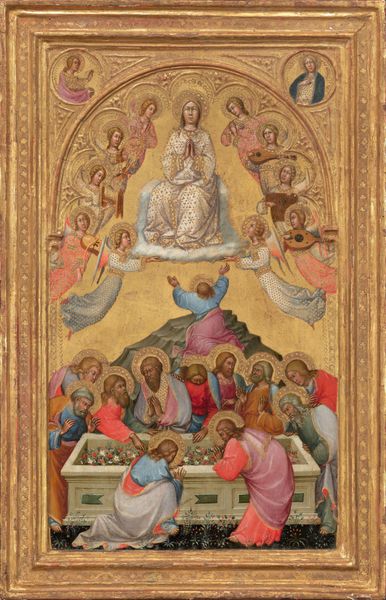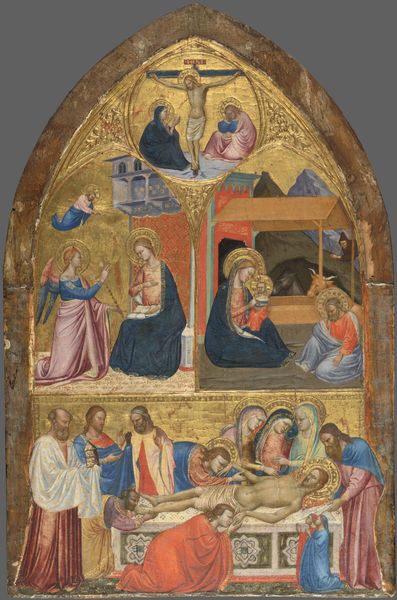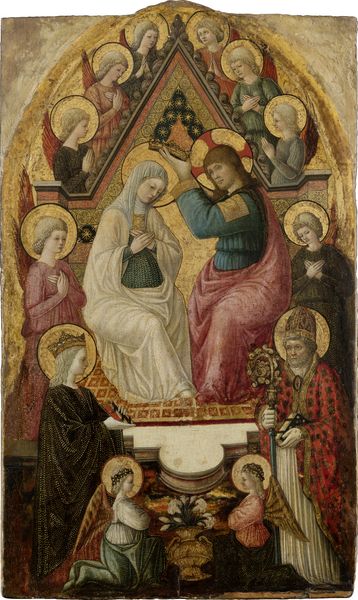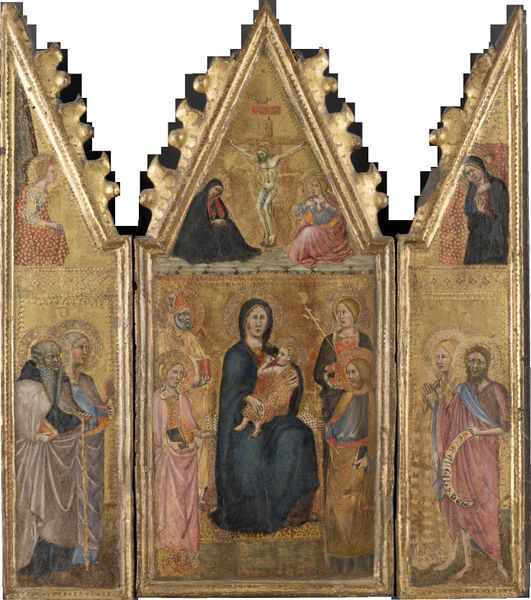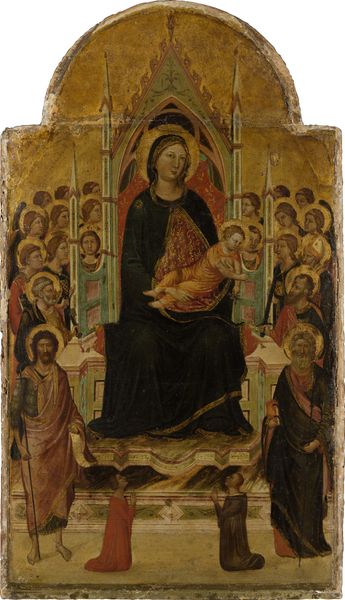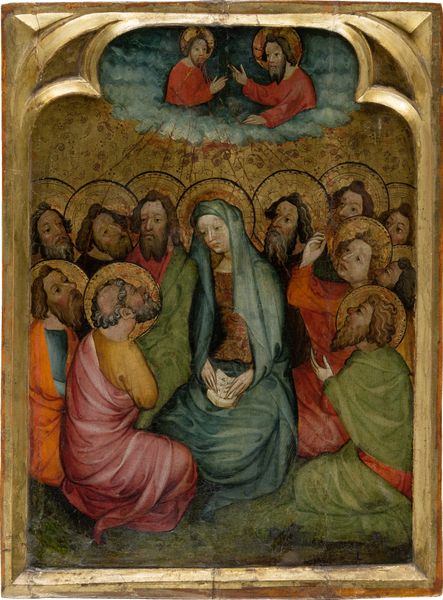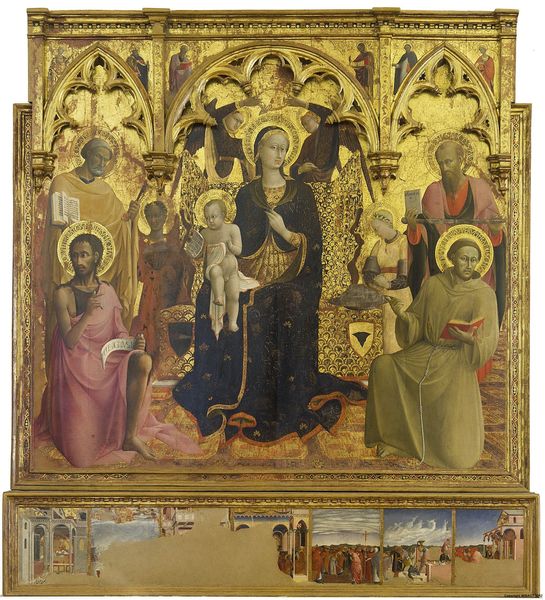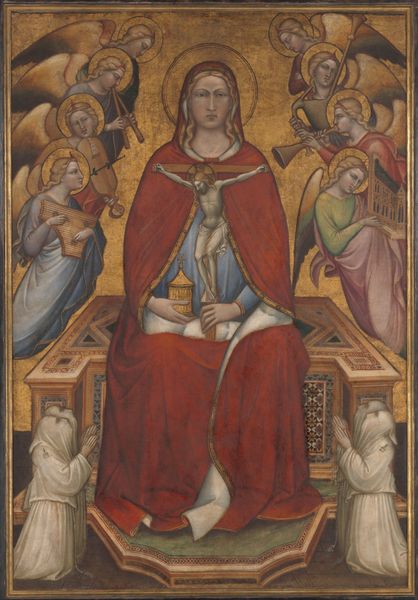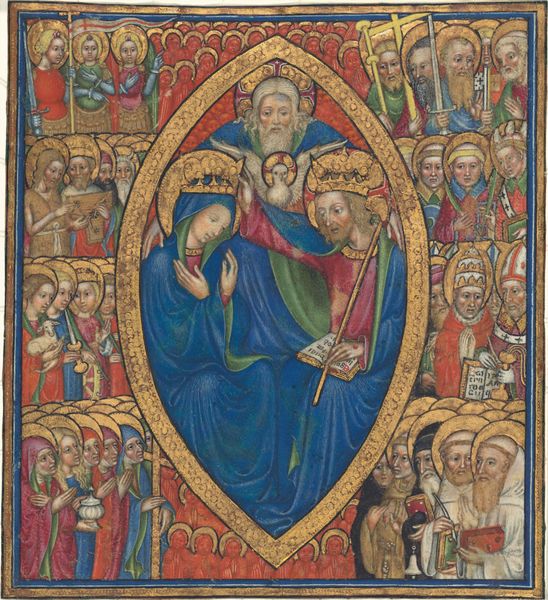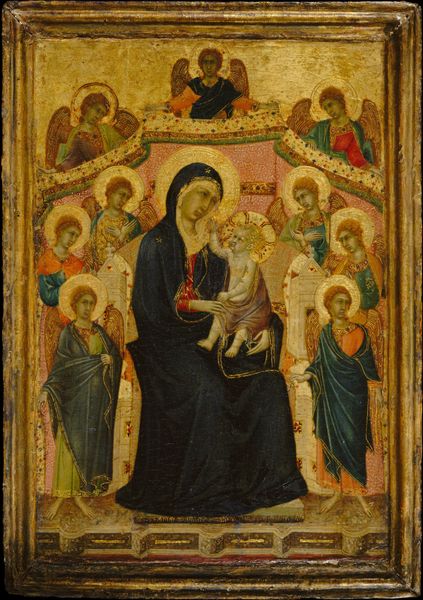
tempera, painting
#
medieval
#
tempera
#
painting
#
figuration
#
oil painting
#
history-painting
#
international-gothic
#
virgin-mary
#
angel
Dimensions: Overall, with engaged frame, 20 x 12 7/8 in. (50.8 x 32.7 cm); painted surface 17 5/8 x 10 1/2 in. (44.8 x 26.7 cm)
Copyright: Public Domain
Editor: This is "The Coronation of the Virgin," created between 1377 and 1383 by Niccolò di Buonaccorso, using tempera. There's something so formally rigid, yet strangely comforting about it, especially the rows upon rows of angels. How do you interpret this work, considering its historical context? Curator: It’s fascinating to consider this work in light of its socio-political moment. The International Gothic style, exemplified here, became popular across Europe in the late 14th century among wealthy patrons. It communicated a message of refinement, power, and a certain cosmopolitanism. Think about who commissioned it: a confraternity or wealthy family displaying piety and worldly status. Editor: So, it’s less about pure religious devotion and more about... signaling? Curator: Signaling is a key component. How else did the elite assert their position? Visual culture was crucial. The gold leaf isn't just for show; it denotes heavenly light and emphasizes the patrons' connection to divine authority. Do you notice how the Virgin and Christ are placed above the earthly realm? Editor: Yes, there's that clear hierarchical structure, visually reinforced by the tiers of figures. But it also seems intended for public display, to inspire reverence. Curator: Precisely. These images functioned as public performances of faith and social standing. They reinforced established hierarchies while simultaneously offering viewers a vision of celestial glory. Understanding this duality—the spiritual message intertwined with the material reality of patronage—is key. Editor: I hadn't fully considered the performative aspect before. Now, seeing how the religious and the political were so entwined in its creation and reception really illuminates its purpose. Curator: Exactly. Analyzing art through a historical lens gives us a much fuller appreciation. Art wasn't created in a vacuum; it actively participated in shaping its world.
Comments
No comments
Be the first to comment and join the conversation on the ultimate creative platform.
